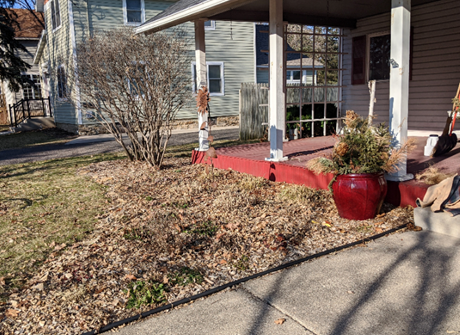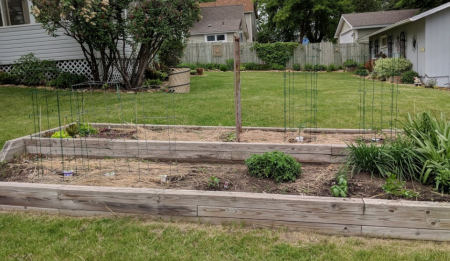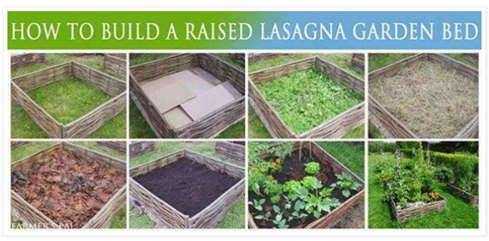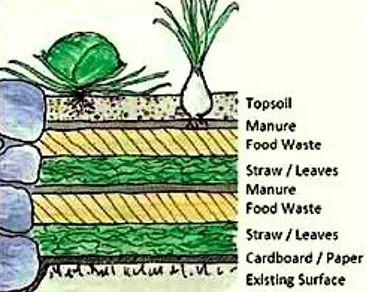Click below to listen to my 2 min. Garden Bite radio show: Lasagna gardening or “sheet” gardening
Oh we had some wonderful days last week. I hope you had a chance to move about your gardens and start clean up!


I saved the grasses to use as mulch on my vegetable garden. Since we ARE headed into a time when we can start to really do some things outdoors, keep in mind, we still have to be aware of soggy soil and frost still in the ground. (Although not much)
I received a question about “sheet” gardening, also known as lasagna gardening. Lasagna gardening is a no-dig, no-till organic gardening method that results in rich, fluffy soil with very little work from the gardener. Kind of….
It DOES take time. Now I have a mini version of my own which includes layering my garden with the dried leaves from last Fall and leaving the spent grasses I use for mulch in the spring.

However, REAL Lasagna gardening begins with newspaper or cardboard laid over an area that you mowed or slashed, depending on the existing vegetation. Cardboard holds back the weeds better as it decomposes more slowly and likely killing the weeds better.
The idea is to layer the garden with “browns” and “greens”. I have links to The Spruce and also to Healthy Sustainable Living for ideas. There are varying methods people use for their “browns” and “greens”.


You then add layers of alternating nitrogen- and carbon-rich materials, topped with a mulch to hold the materials in place. Because there’s no “turning” as you do with a compost pile, it takes longer to decompose, about a year.
From The Spruce: You can make a lasagna garden at any time of year. But fall is the optimum time for many gardeners because of the amount of organic materials available—fallen leaves, waste from garden cleanup, etc. You can let the lasagna garden sit and break down all winter. By spring, it should be ready to plant. Plus, fall rain and winter snow will keep the materials in your lasagna garden moist, which will help them break down faster.
Unless you’re building an extremely small garden bed, lasagna gardening works best if you build it more or less at once — or at least, build each layer at the same time. That means that you need to spread your newspapers at the same time, as well as gather, chop and spread your leaf layer all at the same time. The same holds true for grass clippings and vegetable matter.
The disadvantages of lasagna gardening
